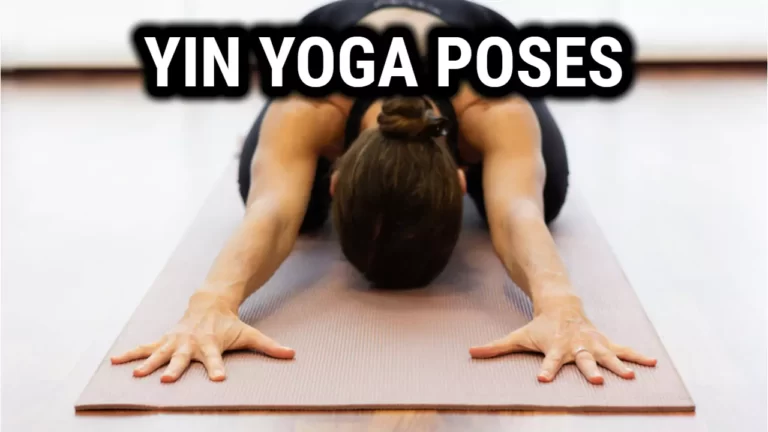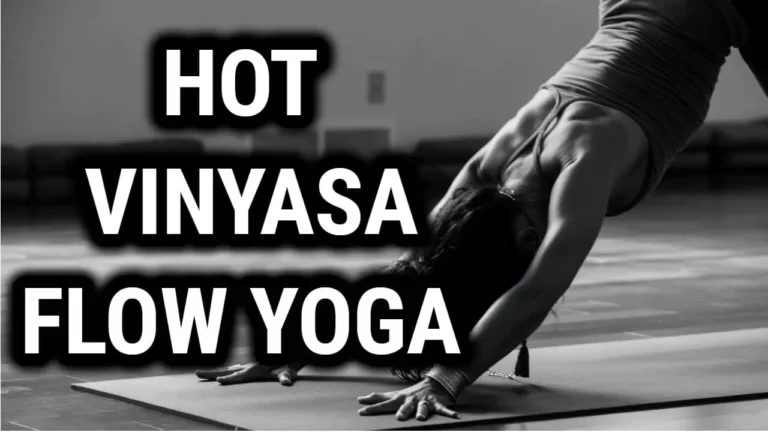Is It Normal To Feel Sore After Yoga

Yoga is an ancient practice with physical, mental, and spiritual benefits that has been practiced for centuries. Its popularity continues to grow today as people from all walks of life seek out its healthful properties.
But have you ever wondered if it’s normal to be sore after yoga? This article will explore the potential causes behind post-yoga aches and pains.
For those looking to reap the rewards of a regular yoga routine, understanding why one might feel sore afterward can help inform their practice and make sure they’re getting the most out of each session without overdoing it or putting themselves at risk of injury. In addition, recognizing potential sources of discomfort allows practitioners to adjust accordingly to maximize benefits while minimizing pain.
To answer this question once and for all: Is it normal to be sore after yoga? Read on for insights into how different factors may contribute to post-practice soreness, what you can do about it, and when it could signal something more severe than a simple case of delayed onset muscle soreness (DOMS).
What Causes Muscle Soreness After Yoga?

It is common to experience muscle soreness after a yoga practice, especially for those new to the exercise. This type of discomfort is known as delayed onset muscle soreness (DOMS).
DOMS typically occurs 8-24 hours post-workout and can sometimes last up to 72 hours. So why does this happen, and what causes it?
When we engage in physical activity that our bodies aren’t used to, such as yoga, tiny tears form in the muscles due to microtrauma. Yoga poses involve holding specific postures that induce muscle contractions, which can cause small incisions in the muscle tissue.
These tears cause inflammation and swelling, which leads to pain or soreness. The severity of the DOMS depends on how intense your practice was and other factors like hydration levels, nutrition intake during your exercise, rest days scheduled between practices, etc.
Certain poses require more strength than others, such as arm balances and core work which can lead to increased soreness compared with gentler classes; even if you have been practicing for years being an expert yogi but have recently changed your style or sequence of poses – postures may feel different from one day to another leading again to making you sore.
Having looked at what might be causing it, let us now consider ways to reduce soreness after yoga.
Ways To Reduce Soreness After Yoga

There are several ways to reduce soreness after yoga and keep your body feeling its best. Here is a list of tips that can help:
1) Take a warm bath or hot tub. Soaking in warm water increases blood circulation, which helps release muscle tension and flush out toxins. Adding Epsom salts and essential oils will further enhance the relaxing effects of this remedy.
2) Magnesium is an electrolyte mineral found naturally in the body, but it can be depleted due to intense physical activity like yoga. Taking magnesium supplements or eating foods rich in magnesium can help replenish these minerals and speed up healing time.
3) Get plenty of restful sleep! Ensure you get at least eight hours of quality sleep every night, so your muscles have enough time to repair themselves from any microtrauma caused by exercise.
These simple steps can make all the difference in reducing post-yoga soreness and helping maintain overall well-being. Now let’s look at how proper form during practice prevents injury and minimizes soreness afterward.
Maintaining Proper Posture to Avoid Feeling Sore After Yoga
Maintaining proper posture while exercising is essential to keep muscles from becoming sore after a yoga session. One example of this can be seen in the neutral pose – also known as tadasana or mountain pose – used at most classes’ beginning and end.
This pose ensures that all muscle groups are correctly engaged and encourages good spine alignment throughout practice. Additionally, focusing on your form during each exercise will help ensure you don’t strain any muscles beyond their limits and cause pain afterward.
Regular breaks between poses is another way to reduce post-yoga aches and pains. Exercise may feel great when you’re doing it, but pushing yourself too hard for too long can lead to severe fatigue and subsequent soreness later on.
To avoid this, pause when needed and don’t exceed your body’s capabilities; if something feels difficult or uncomfortable, there is no shame in taking a break! Finally, listening to your body’s cues and not forcing yourself into positions that cause pain or discomfort should always be prioritized over completing an exercise perfectly.
Following these simple steps will minimize the potential for injury and maximize comfort levels during and after a yoga session. With proper care before and after class, you can enjoy yoga’s benefits without worrying about experiencing muscle pain afterward.
Stretching Before And After Yoga Sessions

In addition to proper posture and regular breaks, stretching before and after yoga sessions can significantly reduce post-workout pain and soreness. Stretching helps increase blood flow to the muscles, reducing pain and boosting recovery time.
Foam rolling is one of the most popular forms of muscle release; it’s an easy way to target areas that might feel tight or strained during practice. Taking just 5 minutes out of your day for some basic stretches will go a long way toward keeping pain at bay!
Staying hydrated is also essential when it comes to avoiding soreness following exercise. Water helps flush toxins from the body and provides much-needed electrolytes and other nutrients.
Sipping on plenty of water throughout class – especially if you’re sweating heavily – will help ensure your cells are properly nourished to do their job efficiently. Additionally, having adequate fluid intake afterward will help keep inflammation down and boost overall comfort levels.
By combining these simple steps with mindful movement during class, you should be able to enjoy yoga without worrying about excessive post-workout aches and pains. With careful attention paid before and after each session, you’ll reap all its attractive benefits free from discomfort—making every class even more enjoyable!
Benefits Of Heat Therapy To Relieve Muscle Pain After Yoga class
Heat therapy is a powerful ally when it comes to relieving muscle pain and speeding up the recovery process. It can be likened to a comforting warm embrace that envelopes you in its healing embrace; providing relief from soreness so you can get back to doing what you love as soon as possible.
The heat helps to relax tense muscles and increase blood flow, bringing fresh oxygenated nutrients into the area for faster repair.
Using heating pads or hot water bottles are two of the most popular methods of applying heat therapy. However, other options are available such as electric blankets, saunas, and even sunbathing if the weather allows.
Whatever method you choose, make sure not to overdo it – 15-20 minutes should be enough for your body to reap its benefits.
Heat therapy provides an easy way to reduce post-exercise discomfort without any extra effort – all that’s required is patience while waiting for results! With these simple steps in mind, you’ll be able to take full advantage of this natural remedy with minimal hassle and enjoy increased mobility in no time. But how does diet factor into this equation? Let’s explore this further.
Impact Of Diet On Muscle Sore After Yoga
In addition to heat therapy, diet plays an essential role in muscle recovery. Eating the right foods can help reduce post-exercise soreness and increase your range of motion by providing your body with the necessary nutrients and minerals for repair.
Protein-rich foods like lean meats, eggs, and legumes are essential because they contain amino acids to build new muscle fibers. Complex carbohydrates provide sustained energy, while fruits and vegetables offer a host of vitamins that aid healing.
Staying hydrated is also vital as water helps flush out toxins from muscles that contribute to stiffness and pain. Aim for at least 2 liters or eight glasses of water per day to ensure you get enough fluids throughout the day! If plain H2O isn’t your thing, herbal teas, low-sugar sports drinks, or smoothies can be great alternatives.
Finally, consider taking supplements such as omega-3 fatty acids, turmeric, and magnesium, as these have been shown to reduce inflammation associated with delayed onset muscle soreness (DOMS).
With all this in mind, many options are available for helping our bodies recover after exercise so we can get back into action quickly!
TIP: Consider adding massage treatments regularly to relax sore muscles more effectively over time. This can be done by visiting a professional masseuse or using self-massage tools at home – either way, it will surely leave you feeling refreshed and ready for another workout session soon!
Massage For Relaxing Muscle Soreness After Yoga Practice
It’s no wonder that sore muscles after yoga are so common – according to recent studies, over 60% of people experience muscular discomfort following a workout. Fortunately, massage can help reduce pain and ease muscle tension and soreness.
Not only does it boost circulation in the body which helps speed up recovery time, but it also increases our production of feel-good hormones like serotonin and dopamine which can provide an extra dose of relaxation.
Several options are available when looking for ways to incorporate massage into your post-yoga routine. You could receive regular treatments from a professional masseuse or even try self-massaging tools at home, such as foam rollers or massage balls.
If you’re short on time, simple stretching exercises can be just as practical! For instance, light stretches focusing on areas where you experienced tightness during class may help alleviate any lingering discomfort.
Most important, though, is to take care of yourself outside of exercise – make sure you get enough restful sleep each night and give yourself ample time between workouts if needed to allow your muscles to recover properly before the next session.
Doing this will ensure optimal performance and leave you feeling energized instead of exhausted. With these tips in mind, we should all have no problem staying active without worrying about being too sore afterward!
Also Read: Find Your Flow: The Right Amount of Time to Hold Yoga Poses for Weight Loss
Rest And Sleep to Cope with Soreness and Optimal Performance
Rest and sleep play a significant role in promoting optimal performance after yoga. When we’re active, our body needs time to repair itself – physically and mentally – to perform at its best next time. This means adequate rest is essential for staying healthy and energized during workouts.
Sleep helps us regulate hormones like cortisol which controls how much energy we have throughout the day. It also allows us to reset our brains and focus on tasks more efficiently when awake.
In terms of physical recovery, getting enough shut-eye helps rebuild muscle strength, improve coordination between muscle groups, and replenish glycogen stores lost during exercise.
For these reasons, prioritizing restful sleep should be part of everyone’s post-yoga routine if they want to feel their best while continuing their practice. Taking some time out each night can do wonders for helping you achieve your goals – whether that be mastering a new pose or running your first marathon!
Frequently Asked Questions
How Often Should I Do Yoga To Reduce Muscle Soreness?
It is not uncommon for people to experience muscle soreness after yoga, but how often should you practice to reduce that discomfort? This question can be answered by looking at the benefits of regular yoga practice and how it affects your body.
Take Joe, a 35-year-old office worker who has been doing yoga three times a week. After one month, he noticed less post-yoga soreness, increased flexibility and improved concentration during the day. Through consistent practice, Joe could see actual physical and mental health results.
The key takeaway here is that regularity is essential when it comes to reducing post-yoga soreness. Studies have shown that practicing 3 – 4 times per week will help improve strength, balance, coordination, and overall well-being. Furthermore, if done correctly with proper technique and form, it may even lead to fewer injuries over time!
It’s essential to listen to your body and take breaks when needed; however, having a consistent routine can enable significant progress in your physical fitness and mindfulness skillset.
What Type Of Diet Should I Follow After A Yoga Session?
When practicing yoga, following a healthy diet plan is essential to reduce muscle soreness. Eating suitable food after a session can help your body recover and become stronger. Here’s what type of diet you should follow post-yoga:
• Eat foods with high levels of protein – Protein helps build muscles, so adding some lean meats or plant-based proteins like quinoa and lentils can be beneficial for recovery.
• Include complex carbohydrates – Complex carbs provide sustained energy, helping rebuild damaged muscles and fueling your workouts faster. Think sweet potatoes, oats, brown rice, etc.
• Opt for anti-inflammatory foods – Foods such as leafy greens, nuts, and seeds contain anti-inflammatory properties which aid in reducing inflammation caused by exercise.
It’s also essential to maintain an adequate intake of vitamins and minerals since they play an important role in aiding the healing process.
Focus on consuming nutrient-dense fruits & vegetables (like avocados) as well as sources of healthy fats like olive oil or fish oils to boost your immune system. Additionally, ensure you stay hydrated throughout the day; aim to drink at least eight glasses of water daily!
Incorporating these dietary changes into your daily routine will optimize muscle recovery and improve overall health and well-being. It’s always best to consult with a nutritionist if you need more clarification on specific dietary requirements for optimal yoga performance.
Are There Any Exercises I Can Do To Prevent Muscle Soreness?
One of the most unpleasant feelings after a yoga session is soreness. But don’t let this feeling stop you from getting back on the mat! There are plenty of exercises and strategies to help prevent muscle soreness – so you can keep your practice going strong.
Let’s explore practical ways to reduce post-yoga discomfort:
1) Stretching before and after your session: Take time for static stretches before and after each class, focusing on tight areas or any specific poses that need extra attention.
2) Hydrate, hydrate, hydrate!: It’s essential to drink plenty of water throughout your workout to flush out toxins and ensure muscles have enough fluids for recovery.
3) Invest in foam rollers or massage balls: Foam rollers or massage balls will help increase blood flow and relieve deep tissue pain.
The good news is plenty of tools are available to help you maintain flexibility and avoid muscle fatigue during your next yoga session. Proper preparation, rest, nutrition, and supplementation — not to mention stretching both before AND after — can minimize post-yoga aches and pains.
So don’t be discouraged if you experience some soreness; with these simple steps, you can get back into your routine quickly!
Is It Safe To Use Heat Therapy On My Sore Muscles?
Heat therapy on sore muscles is a popular way to reduce pain and discomfort. Heat increases the affected area’s circulation, allowing more oxygenated blood to reach the muscle tissue. This can help speed up recovery time and reduce stiffness.
It’s important to understand that heat should not be used immediately after an injury or exercise session as it may worsen the condition.
Heat therapies like hot baths, heating pads, infrared saunas, and electric blankets are all effective ways to ease soreness. However, each heat type has risks and benefits, which must be weighed before use.
For example, using a hot bath with Epsom salt can help relieve sore muscles but could also lead to dehydration if too much water is lost through sweating. Electric blankets provide direct warmth without getting wet but might cause burns when left unattended.
When using any form of heat therapy on your body, it’s essential to pay attention to how long you’re exposed and at what temperature as this can affect healing time.
Start by testing out a lower temperature first and increase gradually until desired effects are achieved if any skin irritation occurs, stop using the treatment immediately and consult with your doctor or healthcare provider if necessary.
How Long Should I Wait Between Yoga Sessions To Avoid Soreness?
Soreness after yoga is a common issue. Many people wonder how long they should wait between sessions to avoid this pain. The answer may depend on the individual’s fitness level, workout intensity, and recovery time.
For those who are new to yoga or have not been active for some time, it might be best to take things slowly and start with just one session per week. This will give your body enough time to adjust and recover from any soreness before practicing again.
As you become more experienced, you can increase the frequency of sessions and the intensity of poses. However, ensure that you still allow yourself plenty of rest days between workouts so your muscles can fully recover.
In addition to following these guidelines, there are other strategies you can use such as stretching regularly and using ice packs or heat therapy if needed.
Everyone’s body responds differently to exercise, so listening to your and adapting your routine is essential. With proper planning and mindful practice, you’ll soon find what works best for reducing post-yoga soreness!
Related Read: What Are The Ideal Asanas For The Morning Yoga Routine Daily?
Conclusion
Yoga can be a great way to stretch and tone your muscles, but it is normal for them to feel sore afterward. Taking the time to rest between yoga sessions, finding the proper diet for post-yoga recovery, engaging in exercises that prevent muscle soreness, and using heat therapy when needed are all essential steps to keep yourself healthy and energized after each yoga session.
It’s like putting together a puzzle – the entire picture will look better if one piece is missing. Give yourself time and attention so your body feels refreshed and ready for your next adventure with yoga.





